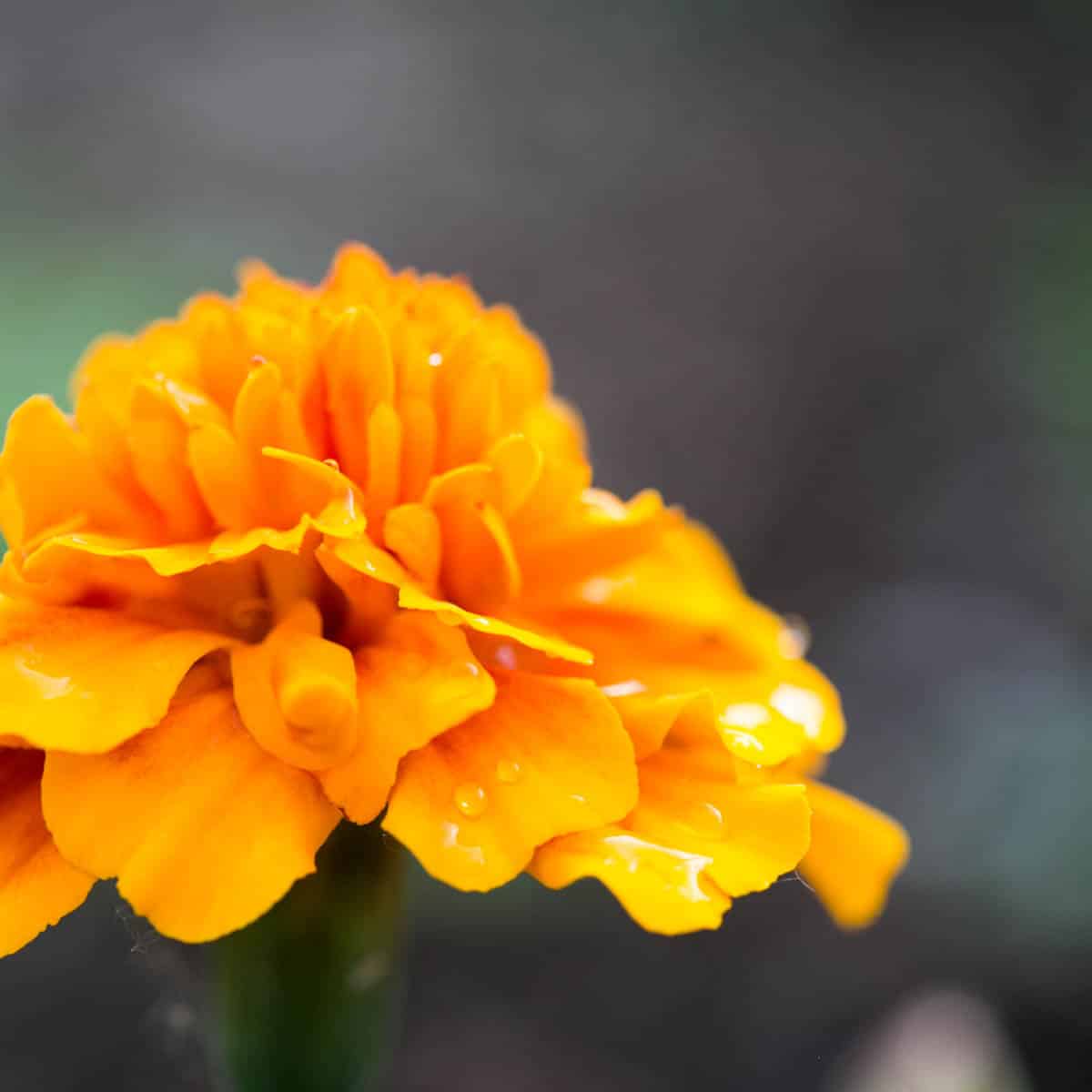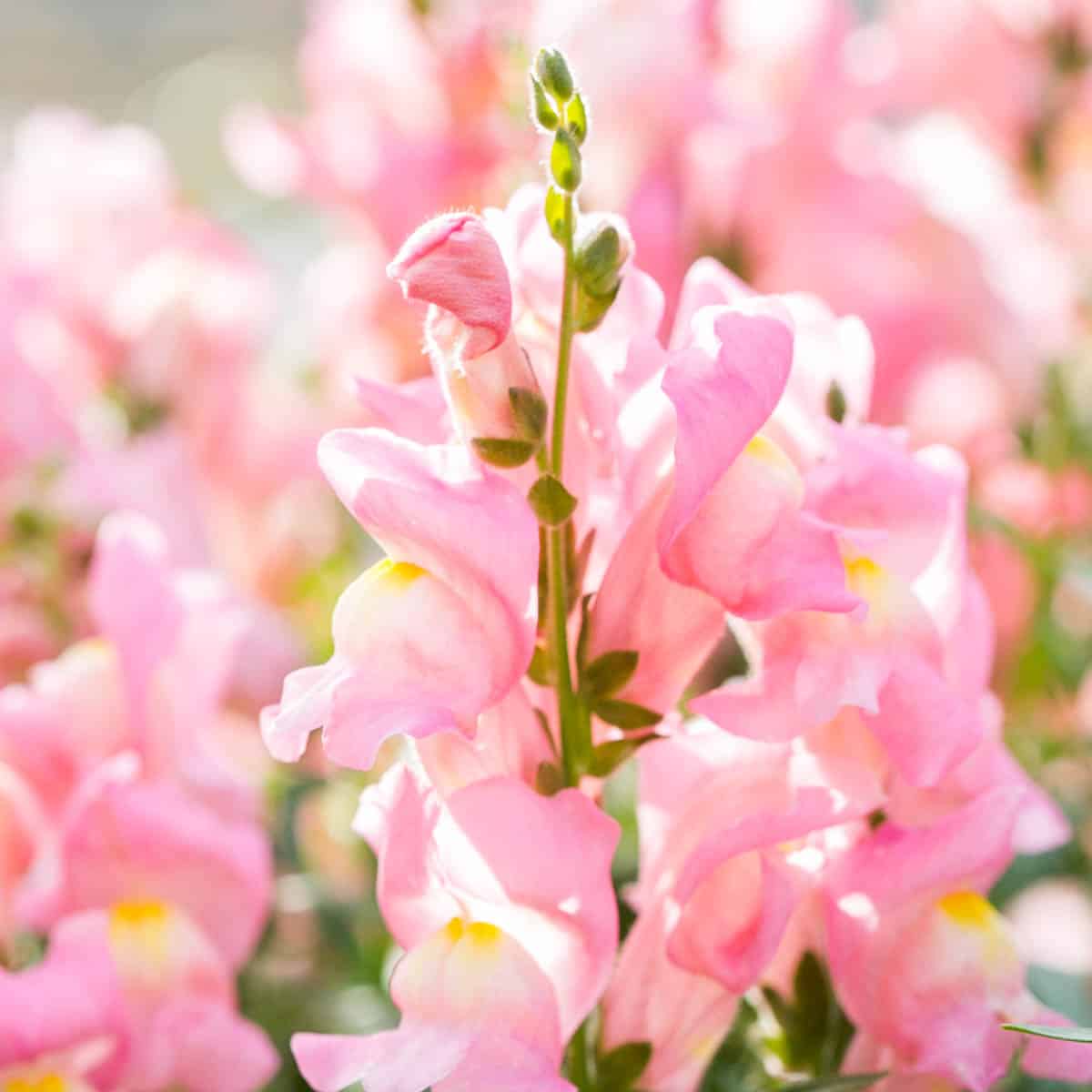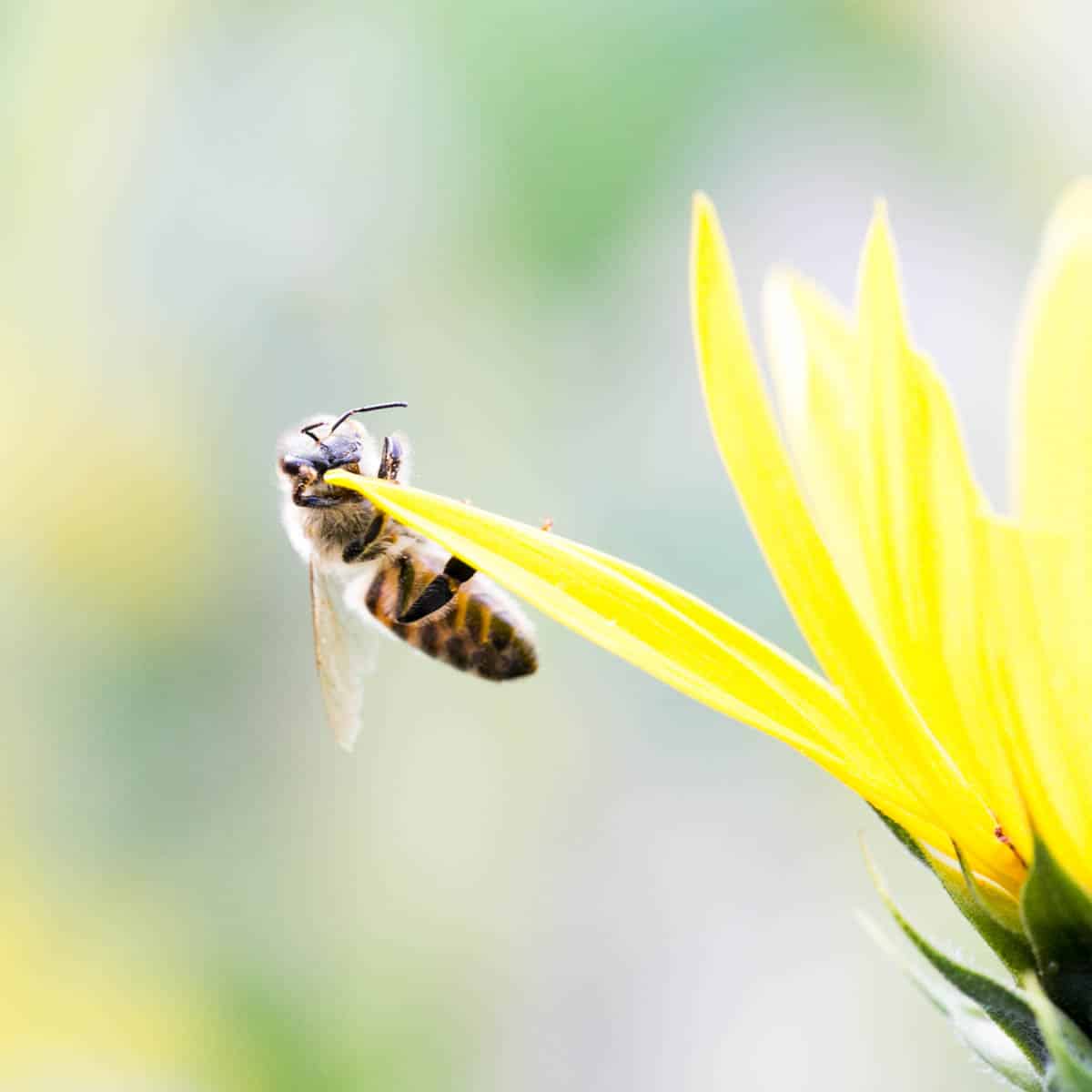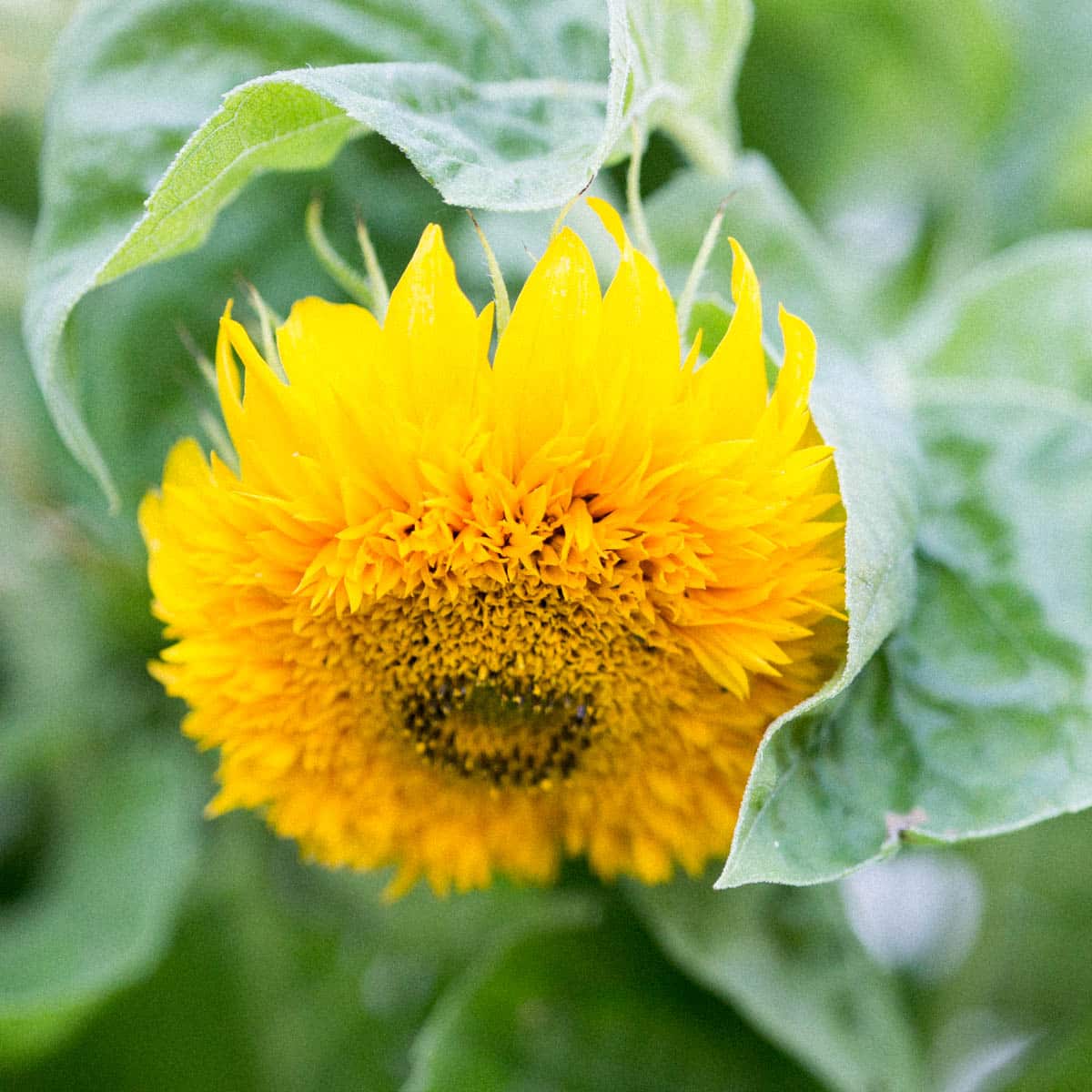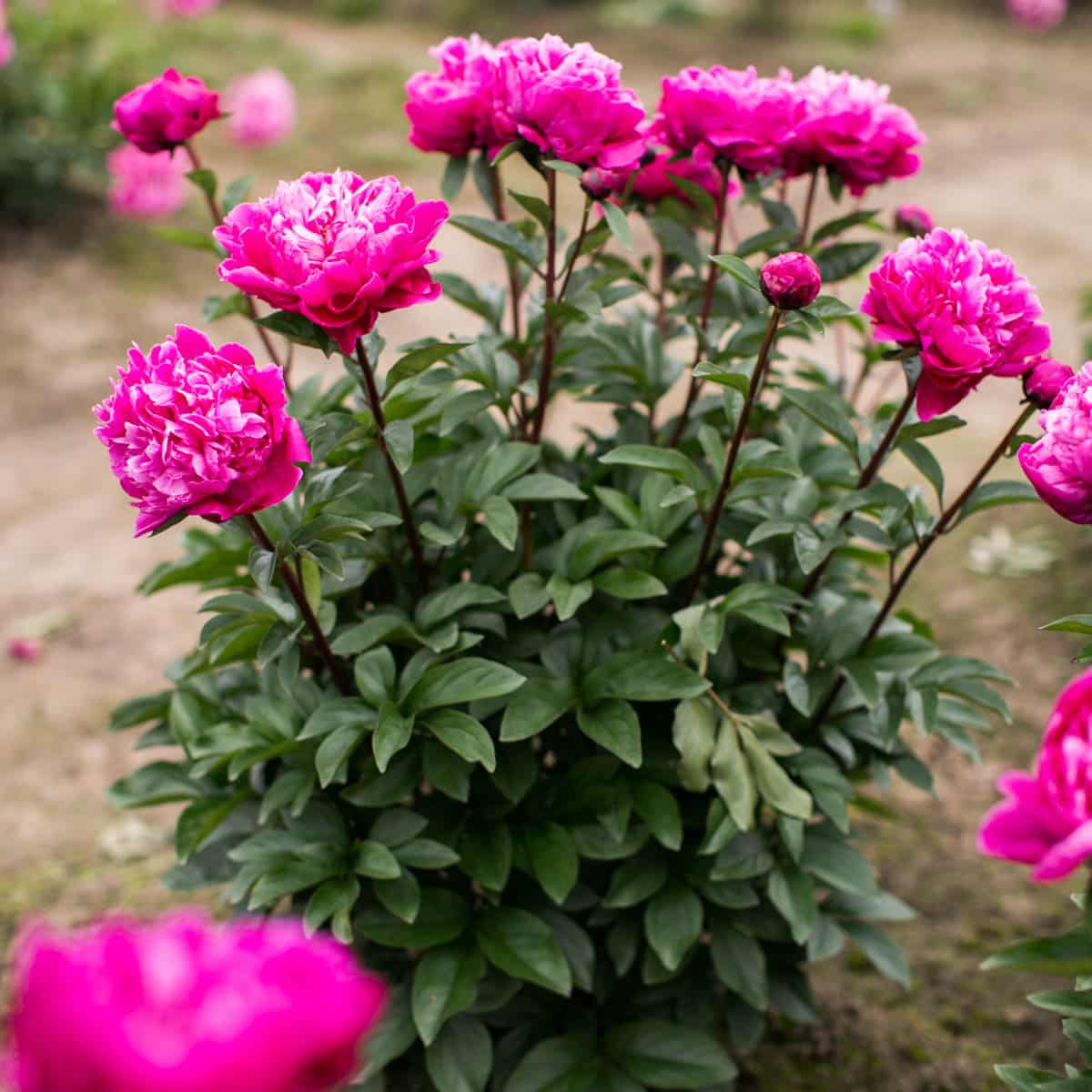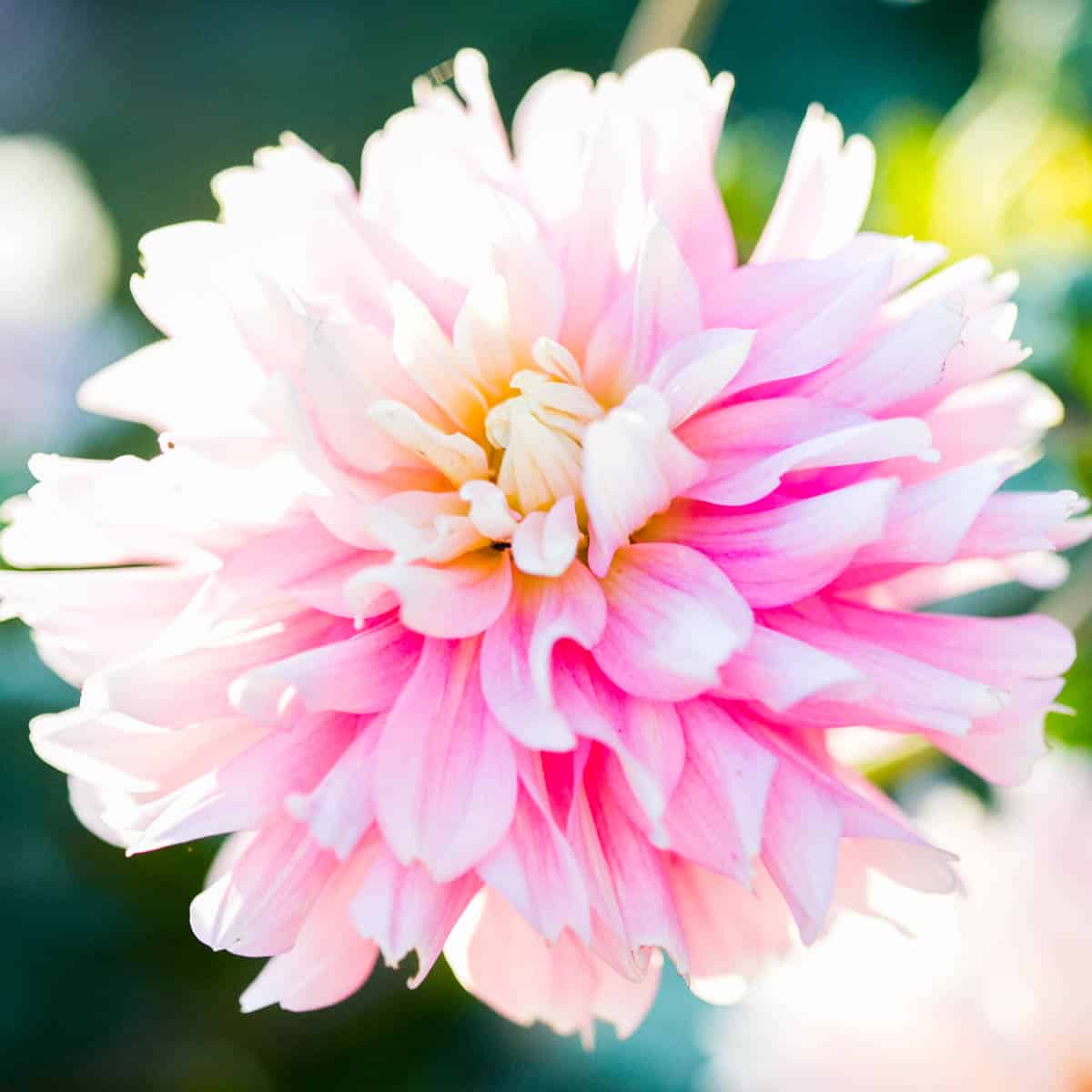How To Grow Pacific Bleeding Heart (Dicentra Formosa)
With delicate pink petals and lacy green foliage, Pacific Bleeding Heart lights up early spring on the west coast.
Growing in forest areas from British Columbia all the way to Central California, this wild bleeding heart is a treasured native flower in Western North America.
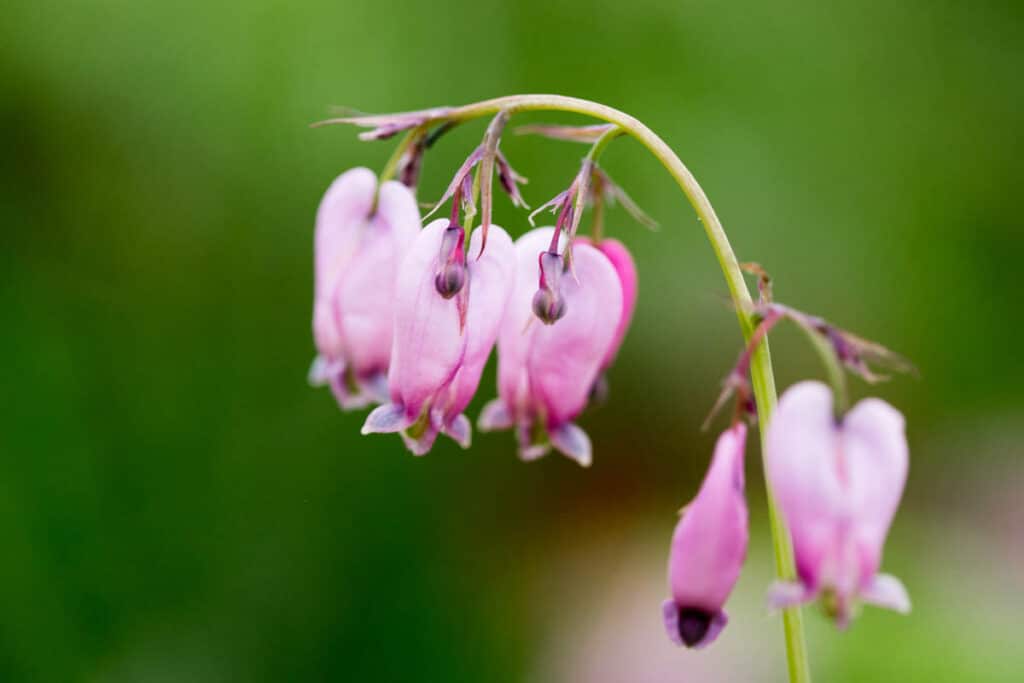
While hiking on my parents property in SW Washington, I recently discovered mounds of this elegant flowering ground cover. Pacific Bleeding Heart boasts nectar-rich flowers that begin to bloom in late April.
This rabbit resistant perennial adds vibrant color to early spring and can bloom into the early summer months. It’s green foliage provides lasting beauty until fall. As a perennial, Pacific Bleeding Heart comes back the following spring.
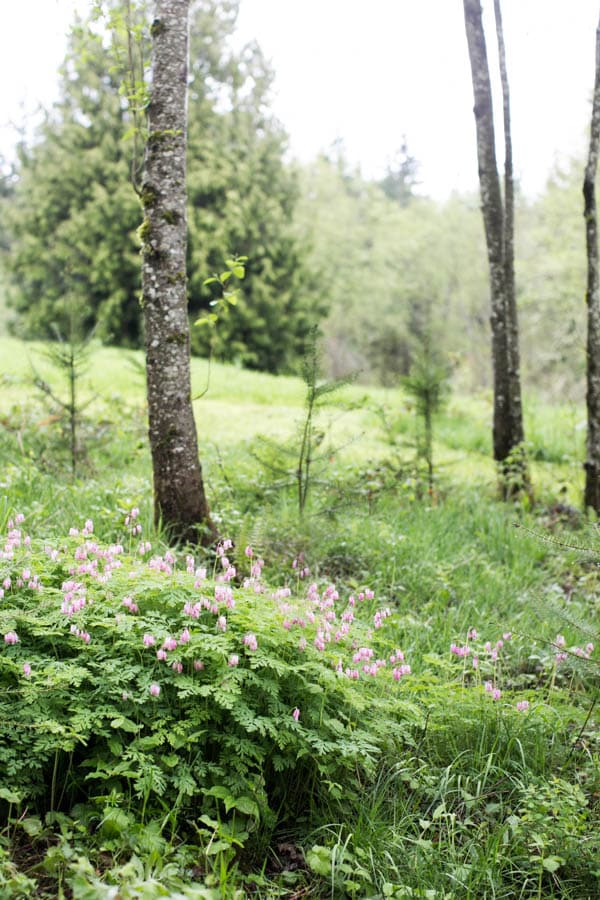
Though this heart shaped perennial looks dainty, it is actually hardy and tough, able to survive with no care or attention when grown in it’s preferred native habitat. (Which has a wide range!).
Let’s explore the best growing conditions for this beautiful wildflower and how you can encourage this bleeding heart variety to make it’s home in your backyard!
Native Plant: Pacific Bleeding Heart is a native wild flower to many areas on the Western coast of the United States. Native plants provide food and shelter for local wildlife, are easy to grow (the conditions are already perfect). They don’t require any fertilizing and typically thrive off of their local water source. Growing native wild flowers has many benefits for the local ecosystem and wild life!
About Pacific Bleeding Heart
Pacific Bleeding Heart is known for its romantic heart-shaped flowers and ability to thrive in shade or part shade. The dainty pink flowers light up forest floors with a bit of romance and grow easily in well-drained soil.
They thrive in rock gardens, or in a shade garden or woodland garden. The fern-like foliage is a soft green and the beautiful heart shaped flowers come in variegated shades of pinks.
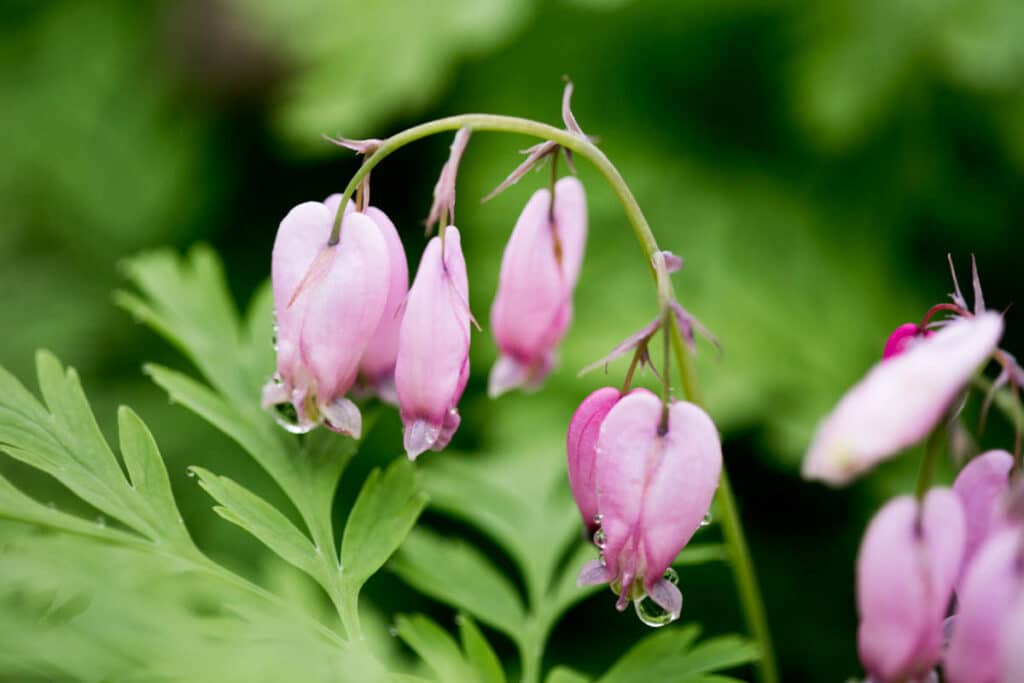
Pacific Bleeding Heart is an understory species, growing beneath the rich green canopy of other trees and shrubs. The Latin name for this beautiful wild flower is Dicentra formosa.
Get your spring garden to do list here!
Appearance
Pacific Bleeding Heart feature drooping heart shaped flowers in bright to light pink that hang daintily from a leafless stem.
The flowers sit in clusters of 5 to 6, above lacy green foliage that grows in a mound. The iconic heart shape of the flower is formed by it’s pink outer petals and the plant typically grows between 10-20 inches in height.
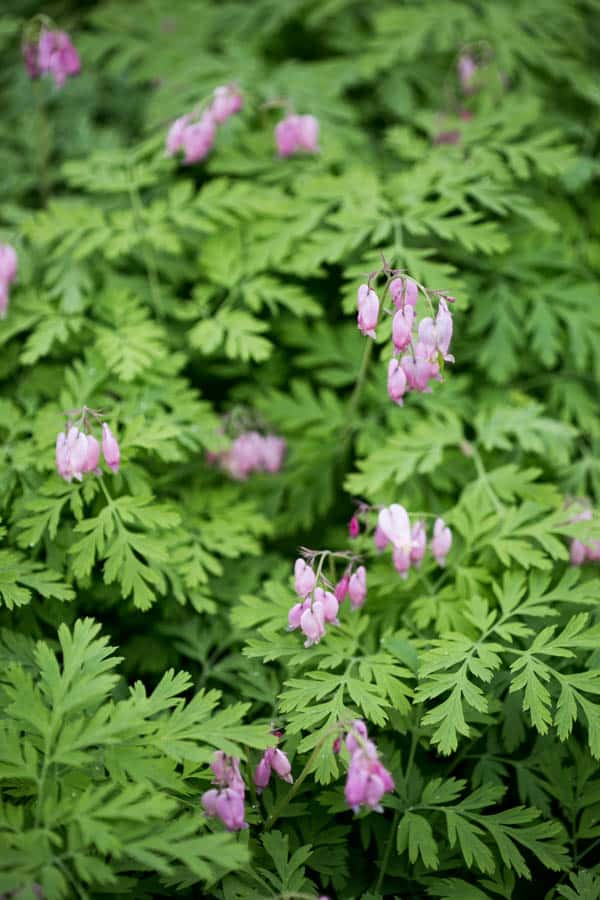
The dainty, fern like leaves of Pacific Bleeding Heart are dissected with many branches. This perennial flower begins to unfurl it’s mounds of green foliage in mid to late March.
Learn how to grow spring blooming lilacs here!
Landscape Uses For Pacific Bleeding Heart:
Pacific Bleeding Heart is often found growing wildly along forest floors. They thrive in middle elevations and can tolerate rain. These romantic flowers can be used in many ways:
- Feature bleeding heart alongside ferns and hostas in a shade garden
- Scatter throughout woodland areas for pops of color and beauty
- Grow in a beautiful flowering shade garden that also features shade loving plants such as Columbine and Hellebore
- Featured in shaded flower beds throughout your home landscaping
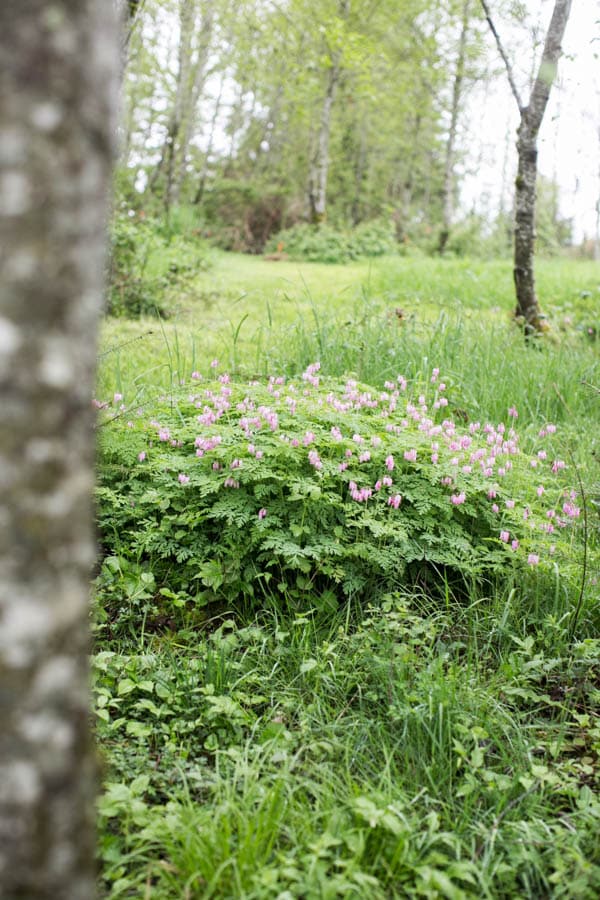
Bloom Time
Pacific Bleeding Heart begin blooming in late April. If dead headed, the flowers may bloom again throughout the summer season. Grow them in full to partial shade so that the plant can thrive and produce abundant blooms!
Can You Deadhead Pacific Bleeding Heart?
Pacific Bleeding Heart can be deadheaded as the flowers wilt and fade. Deadheading the flowers may stimulate the plant to produce more blooms.
Simply remove the entire flower from the base of the plant stem with a clean pair of scissors.
If touching the plant wear gloves.
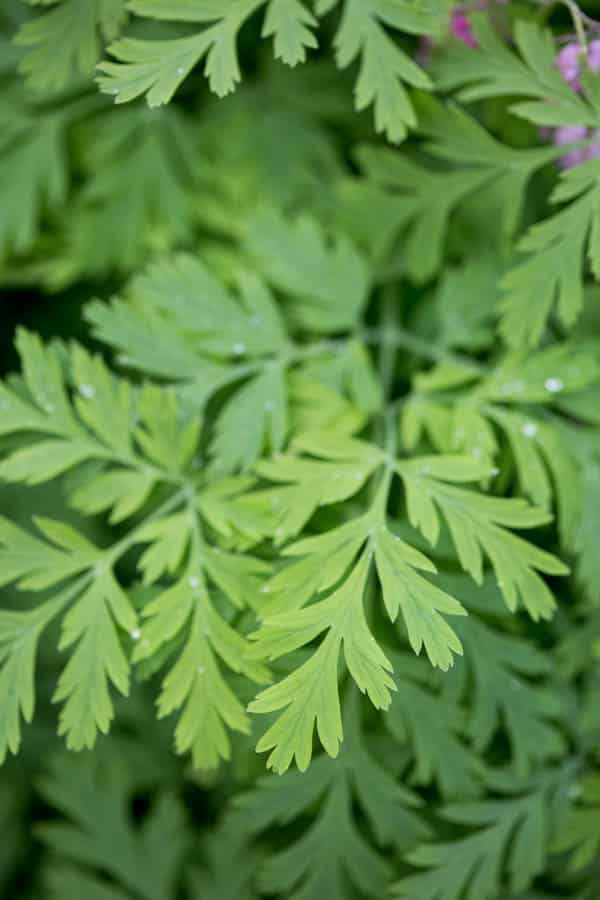
Growing Locations
Pacific Bleeding Heart grows best in zones 3-9.
This romantic perennial loves rugged hillsides shaded by vine maple and native conifers. It can grow near streams, in meadows, on rocky hillsides and in woodland areas.
How To Grow Pacific Bleeding Heart
Pacific Bleeding Heart need fertile, well draining soil that is rich in organic matter. It thrives in temperate conditions and needs shade to partial shade in order to thrive and produce flowers.
When grown in their native habitat they do not need a lot of water. Mulching around the plant with organic matter can increase soil water retention and help the plant survive cold winters.
More details on how to grow them:
Sunlight Or Shade?
Pacific Bleeding Heart does best in shade but will tolerate some sun. It can often be found in forests where sunlight plays through the leaves overhead, providing dappled shade.
While bleeding heart can grow in full sun, it may not produce as many flowers and may go dormant. The extra sunlight may cause it to stop blooming and go dormant early on in the season.
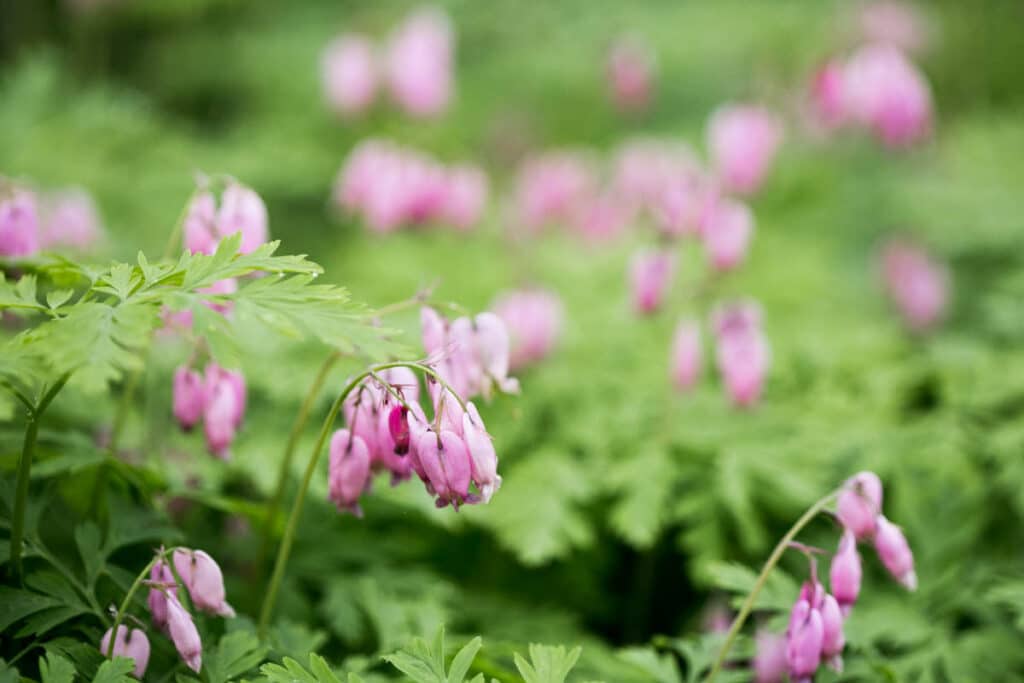
Water
Pacific Bleeding Heart often live in areas that receive a lot of rain. The locations in which it grows normally can be very rainy and wet.
Once the rainy season is over, however, they will not need a lot of water when planted in a shaded area. Give them a deep soak once a week (water more during extreme heat waves).
Though they enjoy having lots of moisture, this easy grower must have good drainage in order to thrive.
Bleeding heart go dormant once the heat kicks in, but it can be a good idea to water the roots during heat waves.
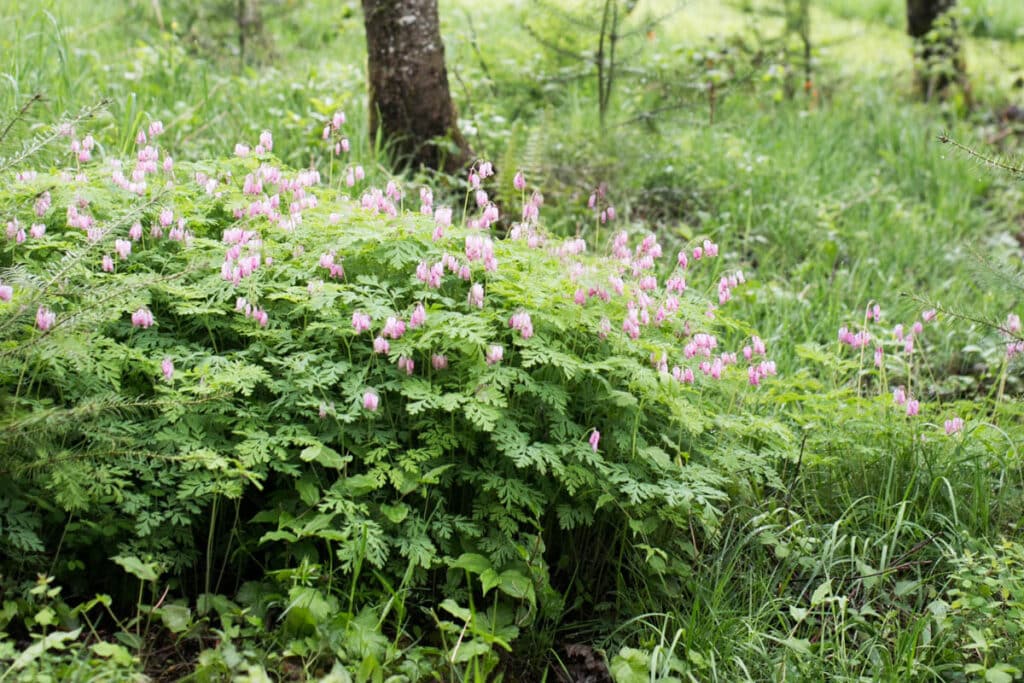
*You may not need to water at all when grown in native zones that are moderate temperatures.
Soil
Pacific Bleeding Heart loves soil that is humus rich (full of organic matter), moist and well draining. Forest floors tend to be rich in organic matter, which is why this location is a wild bleeding heart’s favorite home!
Bleeding heart do not thrive in soil that is constantly wet or muddy. Though they can handle a lot of water, they need good drainage in order to thrive.
Soil pH should be neutral to slightly alkaline.
Fertilizer
These lovely wildflowers do not need to be fertilized when grown in soil that is rich in organic matter. Before planting, amend the soil with compost (decaying organic matter) to improve the nutrients within.

Companion Plants
There are many beautiful flowering plants that can be grown alongside Pacific Bleeding Heart. All of these plants do well in a lush forest setting and many produce flowers:
- Steer’s Head: This odd flower is actually shaped like a steer’s head! It grows well in mountain settings.
- Ferns: There are thousands of different types of ferns. They love cool weather, shade and humus rich soil. They are the perfect companion for bleeding heart and add vivid greenery to the romantic forest landscape!
- Hooker’s Fairy Bells: A whimsical plant that produces flowers dangling under it’s leaves, like bells.
- Evergreen Huckleberry: Edible and lovely, evergreen huckleberry add height and dimension to forest landscapes.
- Hosta: Hosta love shade and moisture and the leaves add gorgeous texture.
- Stream Violet: Quaint yellow flowers and bold green foliage make this flower perfect as a companion to pink bleeding hearts.
- Columbine: Columbine loves fertile, well draining soil and thrives in part shade. Whimsical flowers make Columbine the perfect companion plant.
- False Solomon’s Seal: A native woodland plant with gorgeous white blooms

Is Bleeding Heart Poisonous?
Bleeding heart is poisonous. When ingested, the plant can cause upset stomach. The foliage of the plants can cause skin irritation.
Use care when growing near children or pets. Ingestion of the plant can be a common problem with dogs, so if your pet tends to eat plants, do not feature Pacific Bleeding Heart in your landscape. (Read more information on bleeding heart toxicity with dogs here).
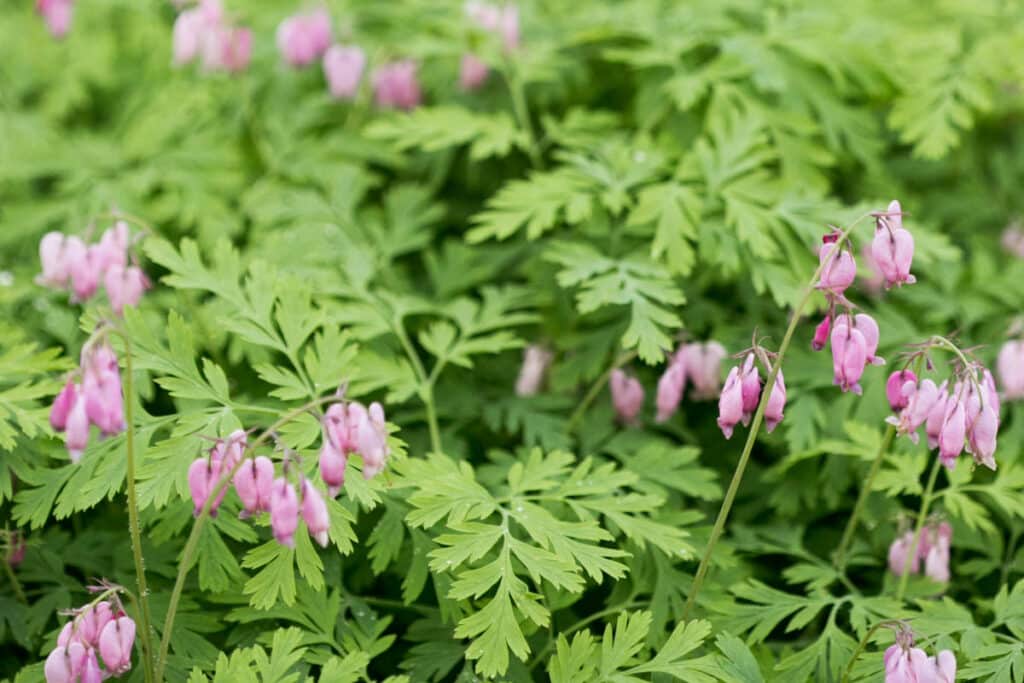
Did You Know? Pacific Bleeding Heart has symbiotic relationships with many small creatures. Ants carry the tiny black seeds of the bleeding heart throughout the forest, spreading the seeds of the plant and feasting on the white portion. The bright colors of the Pacific Bleeding heart attract both hummingbirds and butterflies. And the rich soil in which they grow provides a home for various arthropods such as centipedes and spiders.
FAQ’S On Pacific Bleeding Heart
Yes, this wildflower is native to the Northwest. They grow all the way from Southern British Columbia all the way down to California.
Yes, there are several species of bleeding heart that grow in the wild including Pacific Bleeding Heart on the west coast and Wild Bleeding Heart on the east coast of the US.
Yes, there are several types of bleeding hearts that grow as wildflowers throughout the United States.
Wild bleeding hearts are not invasive and do not spread aggressively.
Pacific Bleeding Heart grows very easily in it’s native habitat. It loves a moist but well draining environment, humus rich soil and part shade conditions. Make sure that your plant has fertile soil and enough shade and it should bloom beautifully (and easily)!
Final Thoughts
Pacific Bleeding Heart offer a dainty flower that has a tough growing ability. These native growing plants thrive in shade and love to grow alongside rocky hillsides and wooded areas. They offer a whimsical touch to a woodland forest with their dainty pink flowers and fern like foliage.
We hope you enjoyed learning about these beautiful native growing flowers with us today. Happy gardening!

